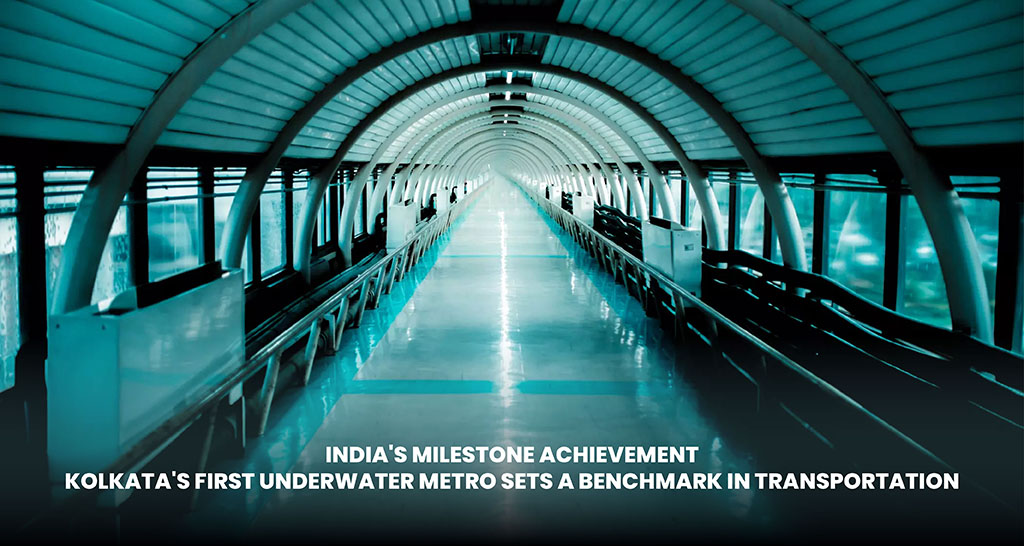India has achieved a groundbreaking milestone with the inauguration of Kolkata’s first-ever underwater metro, showcasing a big step forward in the country’s transportation infrastructure. Prime Minister Narendra Modi revealed this impressive engineering project on March 6, 2024, highlighting Bengal’s skill in carrying out challenging projects. Exploring the main features, challenges, and technological innovations behind the underwater metro sheds light on its significance for Kolkata, setting an example for upcoming urban transportation initiatives in India.
Inauguration and Key Highlights:
Prime Minister Modi inaugurated the metro services in Kolkata, which includes a 4.8-kilometer underground section from Howrah Maidan to Esplanade. The underwater tunnel, spanning 520 meters beneath the river Hooghly, is a part of this transformative metro line connecting two historic cities.
Kolkata proudly claims the country’s deepest metro station, Howrah, located 33 meters below the surface. The underwater passage, spanning 16.55 kilometers, aims to ease road traffic congestion and offer smooth connectivity, making transportation more accessible and comfortable for the residents.
Execution of the Project:
The Kolkata Metro Rail Corporation led this ambitious project, which was estimated to cost Rs 10,442 crore. The underwater tunnel, a remarkable 16.55 km-long stretch, was completed in a record 66 days. It is situated 350 meters after Rabindra Setu, commonly known as Howrah Bridge.
Technological innovation plays a crucial role in overcoming challenges. Special machines, called Earth Pressure Balancing Tunnel Boring Machines, made two tunnels under the water. These machines dug through mostly stiff clayey silt. They started at Howrah Maidan and finished at Esplanade, covering the whole distance in one go of 3.65 km. The tunnel is approximately 30 meters below the water level, and the metro trains will operate at 80 km/h in the underwater section, providing efficient and rapid transportation.
Safety Measures and Infrastructure:
Safety is a significant concern, and the metro line has a communication-based train control system and an automatic train protection system. If there is a signal showing danger, the train automatically slows down, reducing the chances of mistakes by people. To protect passengers, plans have been carefully made for safe exits and escape routes at Howrah station and Strand Road in case of emergencies. Special rubber seals have been installed between the tunnel walls to ensure water does not get in. The tunnels are illuminated with blue lights, and 40 glowing fish decorations make the underwater journey a unique and aesthetic experience for passengers.
Economic Impact and Future Implications:
Kolkata’s new underwater metro is not just a local crown for the city; it could also change how people travel in other parts of India. With Bengal taking the lead, other cities near rivers might consider doing similar projects. This could make transportation better for everyone. The excellent outcome of Kolkata’s underwater metro is like a guide for other ambitious projects, such as India’s first Bullet train that goes under the sea in Maharashtra. This success matches what Gopal Krishna Gokhale said, “What Bengal thinks today, India will think tomorrow,” making Kolkata a leader in improving how we get around.
India has built its first underwater metro in Kolkata, showing its ability to complete ambitious projects. The metro uses new technology, careful planning, and a focus on safety. This achievement sets a standard for city transportation, giving other places a guide to follow. The underwater metro helps ease traffic problems and brings India’s transportation into the modern age, making it more effective and eco-friendly.

